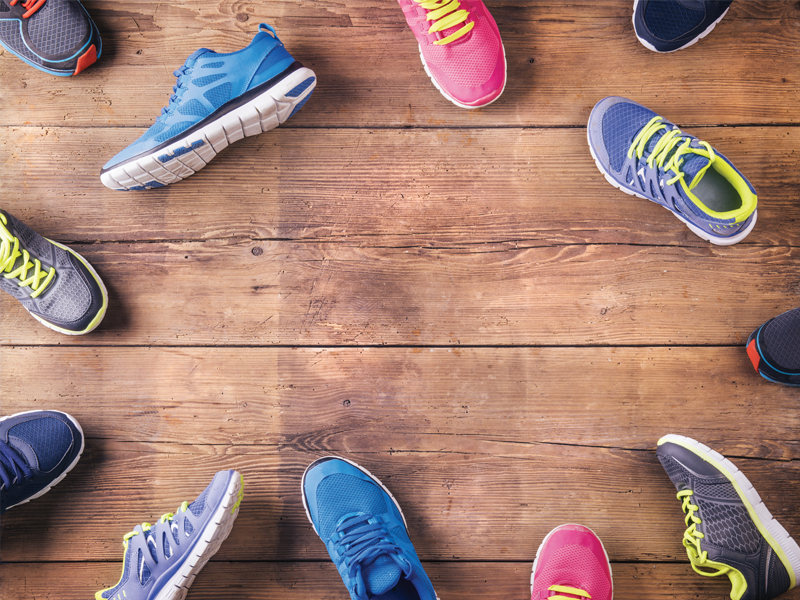Perhaps you’ve heard the line, “See your doctor before beginning an exercise program.”
When’s the last time your shoes got a checkup? Here are a few key things to look for, before your shoes derail your running program with aches, pains, and injuries.
Your running shoes have some basic anatomy. There’s the bottom of the shoe, which has an outsole typically made of rubber or similar material designed for traction and durability. The midsole is typically made of cushioned material designed to mitigate impact and shock. It may have an anti-pronation “plug” of denser material in the midsole designed to minimize or slow pronation (which is, roughly speaking, inward foot and ankle roll). Plastic heel counters may control the sideways (lateral) motion of the heel. The toe box is the area where the toes “live” in the shoe. The upper is precisely what it sounds like, and attaches to the base of the shoe (midsole and outsole). Add laces and a tongue, and you have a basic shoe.
The most basic examination is to observe the shoe on a flat surface from behind. A shoe can be perfectly healthy despite dirt and grime, so don’t let surface appearances fool you. Look deeper. Just sitting on the table, does it collapse inward, or outward? If so, the shoe has worn down due to your impact patterns and it’s time to replace it. There’s no sense risking injury to save a few bucks.
Pick up each shoe, one at a time, and examine the parts. Is the underside (outsole) wearing? Does it still provide traction? Has it worn all the way through? If you can see through the outsole to the midsole, it’s way past time to replace the shoe.
Look at the midsole and anti-pronation plugs. Are they looking compressed? If so, and you bought them for their soft and fluffy feel, they’re getting stiffer and not performing as intended. Put a trip to the running shoe store on your “to-do” list.
Look at the upper. Is a toe (such as a big toenail) peeking through? Though this isn’t a sign of a shoe that’s biomechanically unsound, unless it’s a defective shoe or you have toenails like razors, this is a sign that the shoe is beginning to break down.
Check that everything is glued where it’s supposed to be. Years ago, I pushed a racing shoe past its prime and had it come apart on me in the last meters of a 5K. I’m lucky I didn’t fall on my face.
Some shoes have hard plastic elements in them designed to control various foot motions, or even to “return energy.” Twist and bend the shoe in your hands, and examine plastic parts for faults. If you see or feel cracks when you stress these parts, the shoe is ready for last rites.
Shoe mileage is another way to evaluate shoe health. Most shoes last roughly 300-500 miles; though this “rule” is more custom than science. Do track your shoe mileage, but don’t rely exclusively on it. Some shoes may last 600+ miles, while others may break down after 150.
Minimalist shoes are shoes that are light, flexible, thin, and approximate a barefoot running experience. They may have a variety of advantages over traditional running shoes (a topic for another article). The reason why I mention minimalist shoes in the context of this discussion is that since they have minimal “parts,” they also have very few areas that can malfunction. When they tear or stitches pull lose or they develop holes, they’ll be ready for burial; otherwise, a shoe with minimal cushioning and devices has little that can break down.
Here’s a simple way to evaluate shoe health: How do they feel when you run? If you’re feeling aches and pains that you’re not accustomed to, it may be time for a new pair. You might be pleasantly surprised how wonderful and alive a new pair feels. You might even cure your own injury—or avoid one altogether.
I look forward to seeing you on the roads and trails. Happy running!


